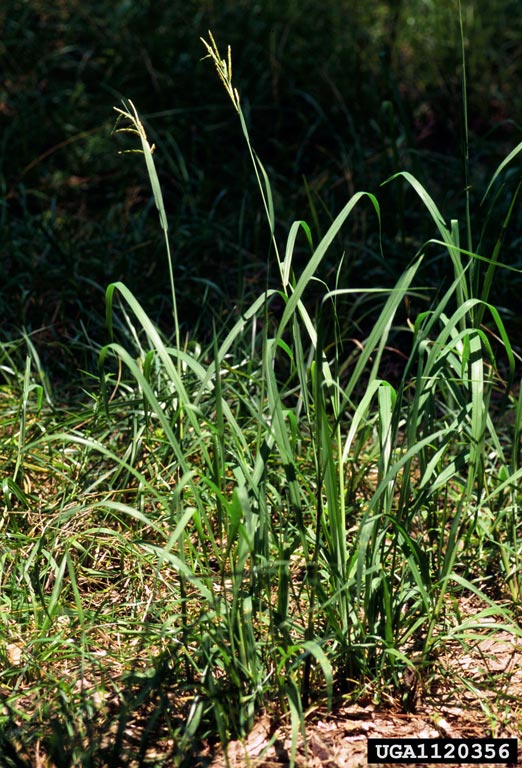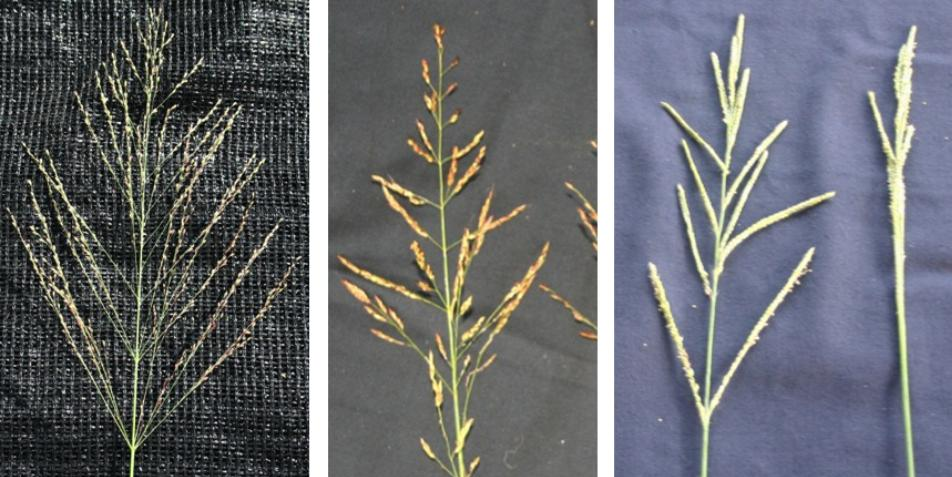
Photo by James H. Miller & Ted Bodner, Southern Weed Science Society, Bugwood.org
When you think of hay in the third week of January, you are probably wondering whether you’ll have enough hay to last until grass greens up in the spring. However, now is the time to develop your plan for controlling Vaseygrass or other grass weeds such as Johnsongrass.
Vaseygrass is a prolific seed producer and will rapidly increase from a few clumps to a field wide infestation. It’s a coarser, thicker stemmed plant and cures much slower than Bermudagrass. It does better in wetter soils, so last summer was a great time for it to grow. Not only were soil conditions favorable for this weedy grass, but frequent rains disrupted hay cutting schedules and Vaseygrass was, as a result, less likely to be mowed down before producing seed heads. This means not only will you need to manage the plants that overwintered (Vaseygrass is a warm season perennial), you’ll also need to manage seedling plants after you control the current population.
Let’s take a look at treatment options. First of all, make sure your target is Vaseygrass. It’s a bunch grass and can grow to six feet tall in a season if not mowed. It has fibrous roots and few, if any, rhizomes. The leaf’s edges can be wavy for part or all of its length, and it has many hairs where the leaf joins the stem (ligule).

Take soil tests to ensure the fertility of your hayfield is where it needs to be for the level of production you’re targeting. Remember, harvesting hay removes far more nutrients from the land than grazing does. Potassium deficiencies have developed in many hay fields where producers have cut costs by cutting fertilizer rates. Getting fertility right will strengthen stands and stimulate Bermuda to rapidly fill gaps created by successful control of Vaseygrass and other weeds.
If you have been conscientious enough to identify a small number of clumps in your hay field, spot treatment with a 1% solution of glyphosate will give control. This can be done any time after Vaseygrass greens up. Clumps that overwintered, may have dead frosted leaves on the outside. These dead leaves will not take up glyphosate; wait until new leaves extend above the frosted leaves to apply the herbicide.
UF/IFAS weed science specialist Jay Ferrell recommends two treatment options for broadcast herbicide control of Vaseygrass in Bermuda fields. Each of these treatments will cause some reduction of Bermudagrass growth for a period of time.
- Option one: Pastora herbicide at 1 to 1.5 ounces per acre and 6 ounces per acre of glyphosate. This option provides broader spectrum weed control and stunts the Bermuda grass less. It is more expensive.
- Option two: Impose herbicide at 4 ounces per acre. This less expensive option causes a longer period of stunting.
Fighting Vaseygrass isn’t a one round knockout. Even if you find only one clump and destroy it, you can expect to see more. However the increased quality of your hay will be worth the effort.
Further information on grass weeds in hayfields can be found in this UF/IFAS publication: Identification and Control of Johnsongrass, Vaseygrass, and Guinea Grass in Pastures. Your county agent can help you assess your specific situation.
Information for this article was adapted from Identification and Control of Johnsongrass, Vaseygrass, and Guinea Grass in Pastures and consultation with Dr. Jay Ferrell.

 0
0

